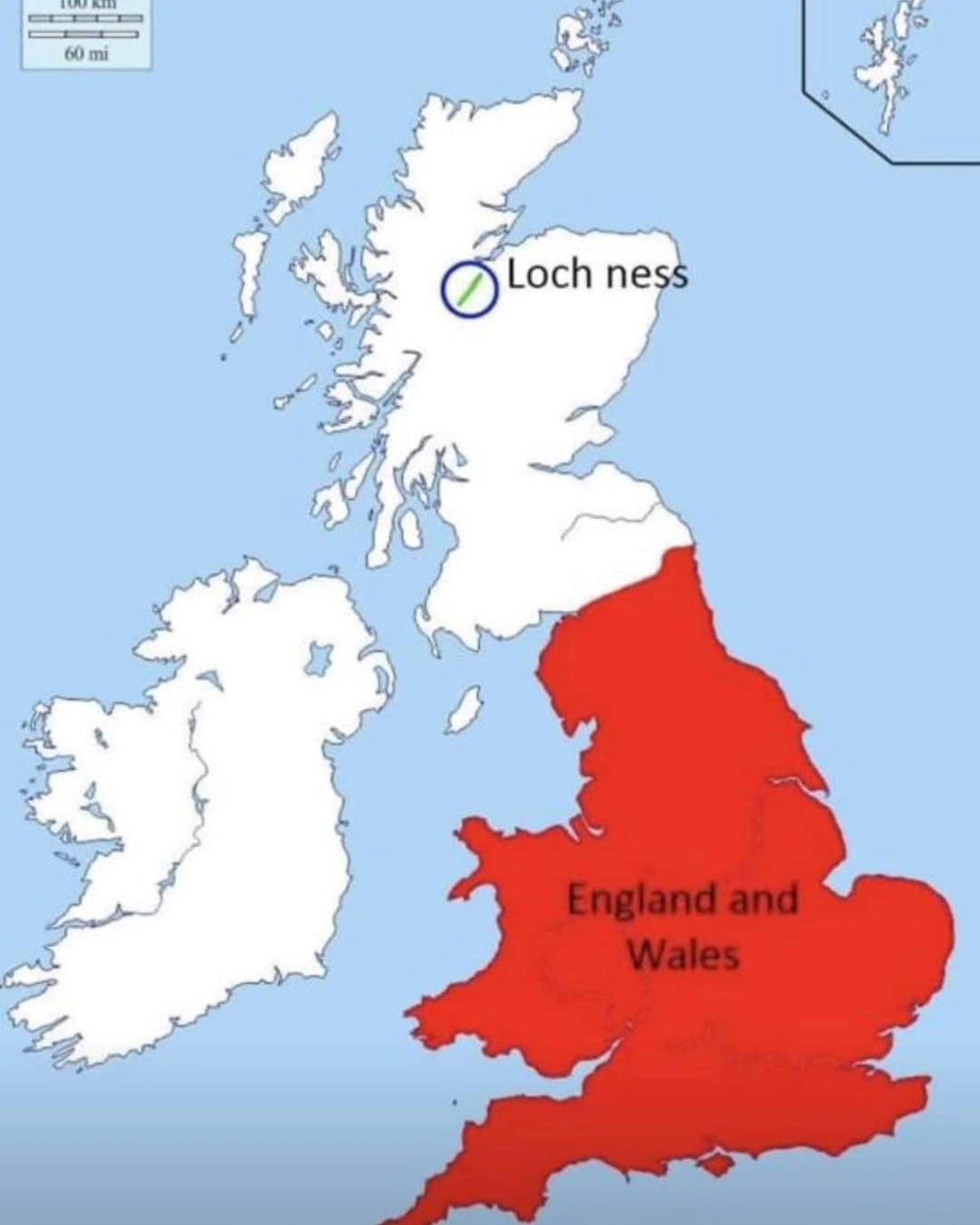Map by Reddit user BufordTeeJustice
When you think of Loch Ness, your mind probably jumps straight to tales of a mysterious monster lurking in its depths.
But here’s a fact that’s just as mind-boggling: this single Scottish lake contains more freshwater than every lake, river, and reservoir in England and Wales put together. Yes, you read that right. One loch outweighs two entire countries when it comes to water volume.
Loch Ness holds approximately 7.4 cubic kilometers of water. To put that in perspective, if you tried to drain it with a standard garden hose, you’d be waiting around 1,000 years.
The loch stretches about 36 kilometers long and plunges to depths of 230 meters in places. That’s deeper than the North Sea and dark enough to hide, well, just about anything.
Why Does Loch Ness Hold So Much Water?
The secret lies in its depth and geological history.
Loch Ness sits in the Great Glen Fault, a massive crack in the Earth’s crust that runs across Scotland. This ancient geological feature created a deep trench that became filled with water after the last Ice Age.
While England and Wales have plenty of bodies of water, they tend to be shallower and more spread out. Loch Ness is like nature’s version of a very deep bucket.
The Scottish Highlands also receive substantial rainfall, and Loch Ness acts as a collection point for water from surrounding mountains and rivers. It never freezes over due to its depth, maintaining a fairly constant temperature year-round.
What This Means for Water Resources
This comparison highlights something important about water distribution and geography.
England and Wales, despite having a much larger population and more extensive water systems, actually have less total freshwater in natural storage. This matters when we think about water security, climate resilience, and resource management.
Scotland’s abundance of deep lochs gives it a natural advantage in freshwater reserves. Meanwhile, England and Wales rely more heavily on reservoirs, which are human-made and shallower, making them more vulnerable to evaporation and drought conditions.
Beyond the Numbers
The next time someone mentions Loch Ness, you can impress them with something more concrete than monster mythology. This massive body of water is a testament to the raw power of geological forces and the importance of understanding our natural resources.
Whether or not Nessie exists, the loch itself is remarkable enough to deserve our attention and respect.
Help us out by sharing this map:
